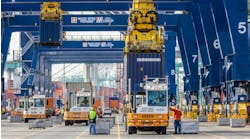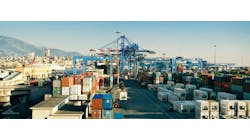In the dead of winter, the merest hint of the sun can bring renewed optimism to those who’ve been too cold for too long. In a similar manner, shippers who were exposed to very poor market conditions in the recent past are now finding encouragement as the situation improves from downright lousy to could-be-worse.
The Shippers Conditions Index (SCI), a compilation of factors affecting the shippers transport environment tracked on a monthly basis by transportation forecasting firm FTR, registered in near-neutral territory at -0.6 for the month of November 2015, reflecting mild market conditions. According to FTR, the index will head into a moderately negative range later in 2016 as expectations for a tight capacity environment in 2017 begin to take hold. Any reading below zero indicates a less-than-ideal environment for shippers, so while the SCI is still in the negative zone, at least it’s close to break-even, and for some shippers, close is good enough.
“The tough conditions that shippers had been operating in since the end of the recession have been muted over the last year,” notes Jonathan Starks, chief operating officer at FTR. “Over the last 12 months the SCI has averaged a reading of -1, a sharp contrast to the -6 that it averaged for the three years prior. These more benign conditions have come about because of two key factors: fuel prices have yet to find a bottom, and truck and rail capacity are ample enough to handle any surges in freight. With oil prices continuing to fall to decade lows to start 2016, it looks like we could even see some positive readings during the first quarter of the year.”
As Starks sees it, the stable environment will eventually come to an end, but probably not until late 2016 at the earliest. “The more likely outcome,” he says, “is that the market will remain relatively neutral during 2016 and most of 2017 before shifting negatively for shippers in the latter part of 2017 as several key regulations start having an impact on the market. Forward-looking shippers will be keeping a close eye on those dates as they take advantage of the current environment to nail down capacity and lock in rates.”
Meanwhile, in a separate study of the freight environment conducted by Cass Information Systems, the number of freight shipments and the amount of money spent on freight have both been in what’s described as “a typical seasonal decline” since September 2015. For the month of January 2016, shipments were down 0.2% compared to the same month a year ago, while expenditures dropped 1.4% from January 2015.
Much of this decline can be attributed to softness in railcar shipments, with carloads down by 20.6%, due in part to the drop in energy prices, notes Rosalyn Wilson, senior business analyst at Parsons and author of the annual State of Logistics Report. “Truck tonnage also eroded in January, but not to the same extent as the railroads,” Wilson notes. “Carriers are reporting that capacity and demand are very well matched right now.”




